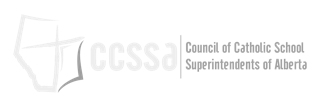Learning from publicly-funded Catholic schools elsewhere in the world can help our vision and planning in Alberta. We can find shared challenges and receive insight for future directions.
I was struck recently by a book chapter by a prominent Catholic educator, Dr. Michael Buchanan [1]. He's an Australian who has written extensively about religious education, and is well-connected to global research in Catholic education. His chapter includes two important insights: one historical and the other sociological.
First, Buchanan explains that Catholic schools in his home diocese of Victoria, Australia — which now contains some 400 Catholic schools — do not have enough teachers formed in the Catholic faith tradition. Historically, the problem first arose when governments were no longer willing to fund Catholic schools in the nineteenth century. The church brought in foreign religious brothers and sisters to lead the schools.
With the decline of religious vocations in the 1960s — and many religious communities expanding their places of ministry — lay people were once again needed in Catholic schools. Australia Catholic education went from rejecting to embracing lay teachers, and could better afford them with changes in public funding. Buchanan’s first insight, then, is that circumstances often change for the apostolate of Catholic schooling; leaders need to see challenges as new opportunities and not wait for others to solve their problems.
Second, Buchanan shares national survey findings about teachers in Australian Catholic schools. Eighty percent of primary teachers and 61% of secondary teachers identify as Catholic. Of these, 25% regularly go to worship services outside of the school — that's about 16% of all teachers.
Buchanan notes that despite what many would see as low church attendance figures for teachers, many of these educators are happy to work in Catholic schools and support their schools’ religious mission. In fact, teaching staff find the religious element even a significant part of their professional life as a teacher. This may seem odd to a church-going Catholic like myself, but educators find something of great value in Catholic schooling.
What do these historical and sociological findings from Australia mean for Alberta Catholic schools and its trustees? As an important level of governance in education, trustees have the responsibility to ensure Catholic schools are living out of their faith-based mission. Budgets are tight, but how can we get creative to provide substantial faith formation for teachers?
Buchanan points out that an Australian national body for Catholic education calls for faith formation that is systemic, ongoing, and accessible. When only small proportions of teachers practice their faith outside of school, school leadership needs to provide structured support for teachers. Well-resourced and accessible programming is needed.
He concludes that parishes should not be responsible for the faith formation of Catholic school teachers, just as they weren't when religious sisters and brothers were the main educators in Australian schools at the end of the nineteenth century.
Catholic educators elsewhere offer insight for us. They help us overcome isolation and fear in the face of our challenges, while potentially enabling us to re-frame our own perspectives.
Dr. Matt Hoven is an Associate Professor and Peter and Doris Kule Chair in Catholic Religious Education for St Joseph’s College at the University of Alberta.
Notes:
(1) Michael, T. Buchanan (2022). “Catholic Teacher Formation in the Land Down Under,” in L. Franchi and R. Rymarz (eds.), Formation of Teachers for Catholic Schools, pages 3-14. Springer.




